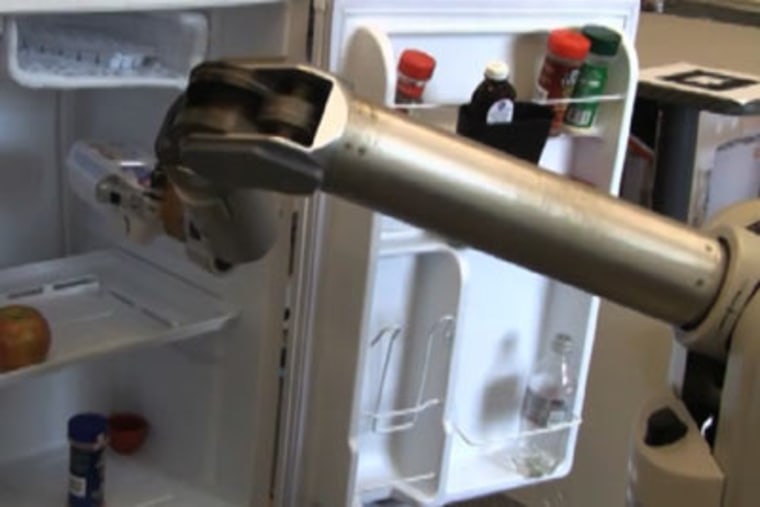
There’s a robot for just about every thankless household chore — one scoops poop, another folds towels, there’s even one that pours beer. Now, thankfully, there’s a robot that tidies up a messy room.
The room-cleaning task is more difficult than it sounds even for humans, which is why we’re more apt to pour ourselves a cold brew than, say, clean up the kitchen after dinner.
To be a good housecleaner, the robot needs to be able to scan its surroundings, identify objects, figure out where they go and then put them in their rightful place. It’s a mentally taxing chore that the robot accomplishes with computer algorithms.
The algorithms allow the robot to consider the nature of an object as it decides what to do with it, explains Cornell University, where the robot was built and tested.
“It learns not to put a shoe in the refrigerator,” Yun Jiang, a graduate student in computer science and member of the research team, said in a news release.
Like anyone tasked to clean an unfamiliar room the first time, the robot isn’t perfect. There’s a learning curve – it improves as it repeats the task and gets familiar with its surroundings.
Still, though, the robot is pretty good from the get go. It was 80 percent accurate the first time it put away dishes, books, clothing and toys. It improved to 98 percent accuracy.
Cornell explains how it works:
The robot begins by surveying the room with a Microsoft Kinect 3-D camera, originally made for video gaming but now being widely used by robotics researchers. Many images are stitched together to create an overall view of the room, which the robot’s computer divides into blocks based on discontinuities of color and shape.The robot has been shown several examples of each kind of object and learns what characteristics they have in common. For each block it computes the probability of a match with each object in its database and chooses the most likely match.For each object the robot then examines the target area to decide on an appropriate and stable placement. Again it divides a 3-D image of the target space into small chunks and computes a series of features of each chunk, taking into account the shape of the object it’s placing.The researchers train the robot for this task by feeding it graphic simulations in which placement sites are labeled as good and bad, and it builds a model of what good placement sites have in common. It chooses the chunk of space with the closest fit to that model.Finally the robot creates a graphic simulation of how to move the object to its final location and carries out those movements.
For those of you waiting around for a personal robot that would be useful everyday, this may be the one.
John Roach is a contributing writer for msnbc.com. To learn more about him, check out his website and follow him on Twitter. For more of our Future of Technology series, watch the featured video below.